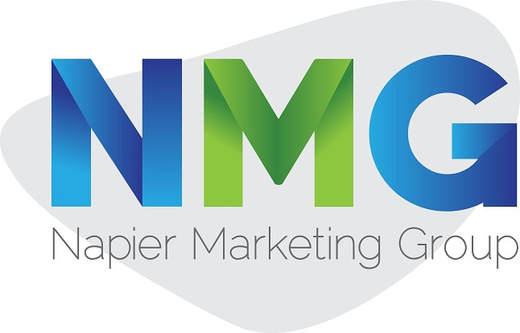The Guide to PR Pitching in 2022
As a PR professional, you must know how great it feels to see your company and client featured in an online story. This is the sole reason why PR pitching is an essential skill for public relation professionals.
A PR pitch is a concise, personalized statement describing a topic's importance and justifying its publication. It typically contains 150 words, but can have as much as 400. PR pitches should be short, engaging, and relevant to the subject.
When a piece you submitted appears in print, online, or on television, a particular rush comes with it. You've achieved a media placement that will improve the standing of your business, brand recognition, and, even better, financial performance.
Still, pitching is not simple. As a result of fewer journalists, quicker news cycles, and an unprecedented number of media outlets, communicators need to become more savvy and strategic in their storytelling. The essence of PR, regardless of how you define it, is effective media relations. If you are in charge of reaching out to the media and cultivating relationships with journalists on behalf of your clients or organization, then read out the following details for more understanding:
Tips to Improve Your PR Pitch
While there are plenty of things that you should work on to make the best PR pitch for your business, here are some of the essential tips you can work on:
Research and Personalize
Even if you write the ideal pitch, it won't be enough if you don't carefully consider to who you are sending the pitch. As stated earlier, the main reason journalists reject many pitches is a lack of customization.
An investigative journalist won't well receive a pitch regarding the top 17 products on Etsy, and a sports journalist wouldn’t want to write regarding an interior designer. Here are some more detailed tips on how to research and create personalization:
Create a Story That is Timely and Unique
Your pitch must pique the writer's attention and provide information that their regular readers will find interesting if you want them to accept it. Nobody wants to read about a discovery that was made years ago, or something that has been written about many times before as well. The journalist won't care if their audience doesn't.
Make sure they haven't discussed the subject before that you are bringing up, or not at least from the same standpoint when you browse through their prior work—a brief explanation of why the information is generally essential and right now will also greatly help.
Keep a Concise Pitch
Most writers like pitches that are only two or three paragraphs lengthy or even less shouldn't come as a surprise. For the pitch, specific word count suggestions vary. The best pitch length for sharing an asset is about 150 words. Suppose you're introducing a brand-new concept; it can be between 400 and 600 words.
In any case, give a quick summary of your proposal before going into further detail if necessary. Cut out all fluff as usual. Time is valuable, and so is having a clean inbox.
Create an Impressive Subject Line
It will result in a time wastage to use the previous suggestions to craft the ideal pitch if the subject you’re writing is dull, obsolete, or overdone. The journalist should be sufficiently intrigued to open your email. Following are the two strategies for doing that:
Recheck before Sending your Pitch
A pitch with poor language and typos is among the simplest ways to irritate an experienced journalist. A crucial step in pitch-writing is asking a client, coworker, or friend who has an excellent eye to review your work.
Remember the Step of Following Up
Whether you should follow up with the journalist or not? The PR industry is divided on this issue. Jury of Journalism shows a study according to which journalists exceeding a 90% ratio said they are fine with getting a following-up step done after initially declining it. Only 10% of respondents said they would prefer no follow-up at all.
Pro tip: Conduct only one follow-up.
Anything beyond that is likely to irritate the journalist you are pitching.
Conclusion
PR pitching is a crucial but most important aspect of getting your products and ideas in the market. They are the solely responsible reasons for how your business will reach the targeted market. In order to have a professional and compelling approach to your PR pitches, it is always best to hire a public relations agency as they can do the job with utmost experience and reliability.
Just remember to keep your pitches short and straightforward, and try to give the general idea in as few words as possible. Also, do not be too clingy or anxious for a response, as this can easily irritate the journalist or influencer you are reaching out to.
A PR pitch is a concise, personalized statement describing a topic's importance and justifying its publication. It typically contains 150 words, but can have as much as 400. PR pitches should be short, engaging, and relevant to the subject.
When a piece you submitted appears in print, online, or on television, a particular rush comes with it. You've achieved a media placement that will improve the standing of your business, brand recognition, and, even better, financial performance.
Still, pitching is not simple. As a result of fewer journalists, quicker news cycles, and an unprecedented number of media outlets, communicators need to become more savvy and strategic in their storytelling. The essence of PR, regardless of how you define it, is effective media relations. If you are in charge of reaching out to the media and cultivating relationships with journalists on behalf of your clients or organization, then read out the following details for more understanding:
Tips to Improve Your PR Pitch
While there are plenty of things that you should work on to make the best PR pitch for your business, here are some of the essential tips you can work on:
Research and Personalize
Even if you write the ideal pitch, it won't be enough if you don't carefully consider to who you are sending the pitch. As stated earlier, the main reason journalists reject many pitches is a lack of customization.
An investigative journalist won't well receive a pitch regarding the top 17 products on Etsy, and a sports journalist wouldn’t want to write regarding an interior designer. Here are some more detailed tips on how to research and create personalization:
- Read the past articles written by each reporter in detail. Learn more regarding the viewpoint, style of writing, and methods of audience communication they use.
- Add a unique personal touch to every email. Many individuals can spot a general copy/paste right away.
- Give some background on your identity. Include a short explanation to the journalist regarding why they should be interested in you.
- Ensure the email address is correct. Although it should be obvious, make sure you address the right person while spelling their name rightly. These particular aspects are crucial and straightforward to follow.
- Avoid sending bulk emails, as it is an unbreakable law. If an email has a lot of other spam emails, journalists will ignore it. Don’t forget that your primary goal for the business pitch is to attract and create a bonding with the journalist you want to target the pitch to. Journalists are continually overwhelmed with irrelevant and stupid pitches.
- Make your pitch specific to the media. Customizing your pitch through ideas is crucial, just like you would when pitching to a journalist.
Create a Story That is Timely and Unique
Your pitch must pique the writer's attention and provide information that their regular readers will find interesting if you want them to accept it. Nobody wants to read about a discovery that was made years ago, or something that has been written about many times before as well. The journalist won't care if their audience doesn't.
Make sure they haven't discussed the subject before that you are bringing up, or not at least from the same standpoint when you browse through their prior work—a brief explanation of why the information is generally essential and right now will also greatly help.
Keep a Concise Pitch
Most writers like pitches that are only two or three paragraphs lengthy or even less shouldn't come as a surprise. For the pitch, specific word count suggestions vary. The best pitch length for sharing an asset is about 150 words. Suppose you're introducing a brand-new concept; it can be between 400 and 600 words.
In any case, give a quick summary of your proposal before going into further detail if necessary. Cut out all fluff as usual. Time is valuable, and so is having a clean inbox.
Create an Impressive Subject Line
It will result in a time wastage to use the previous suggestions to craft the ideal pitch if the subject you’re writing is dull, obsolete, or overdone. The journalist should be sufficiently intrigued to open your email. Following are the two strategies for doing that:
- Be straightforward and explicit about the subject of the email. That entails identifying it as a pitch. They'll be able to recognize it when they browse through their email instantly. Possibly something like, "PITCH: [suggested title]."
- Keep it brief and omit any extra adjectives. Reach the point quickly. Think about the difference between "PITCH: 5 Natural Remedies to Improve Your Metabolic System" and "PITCH: 5 Absolutely Fun and Completely Natural Remedies to provide You the Most Impressive Metabolic System Ever." Pick the first option.
Recheck before Sending your Pitch
A pitch with poor language and typos is among the simplest ways to irritate an experienced journalist. A crucial step in pitch-writing is asking a client, coworker, or friend who has an excellent eye to review your work.
Remember the Step of Following Up
Whether you should follow up with the journalist or not? The PR industry is divided on this issue. Jury of Journalism shows a study according to which journalists exceeding a 90% ratio said they are fine with getting a following-up step done after initially declining it. Only 10% of respondents said they would prefer no follow-up at all.
Pro tip: Conduct only one follow-up.
Anything beyond that is likely to irritate the journalist you are pitching.
Conclusion
PR pitching is a crucial but most important aspect of getting your products and ideas in the market. They are the solely responsible reasons for how your business will reach the targeted market. In order to have a professional and compelling approach to your PR pitches, it is always best to hire a public relations agency as they can do the job with utmost experience and reliability.
Just remember to keep your pitches short and straightforward, and try to give the general idea in as few words as possible. Also, do not be too clingy or anxious for a response, as this can easily irritate the journalist or influencer you are reaching out to.



